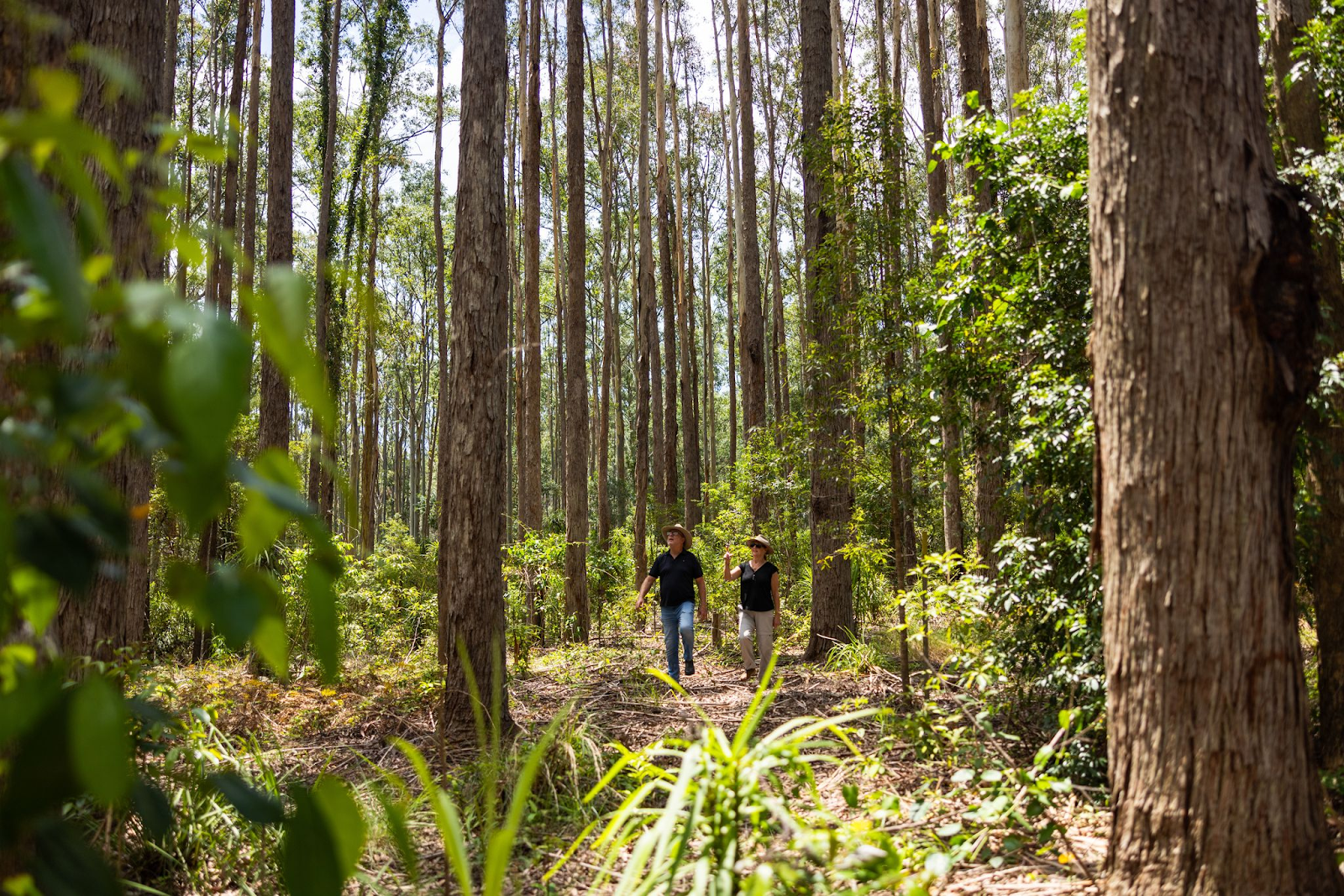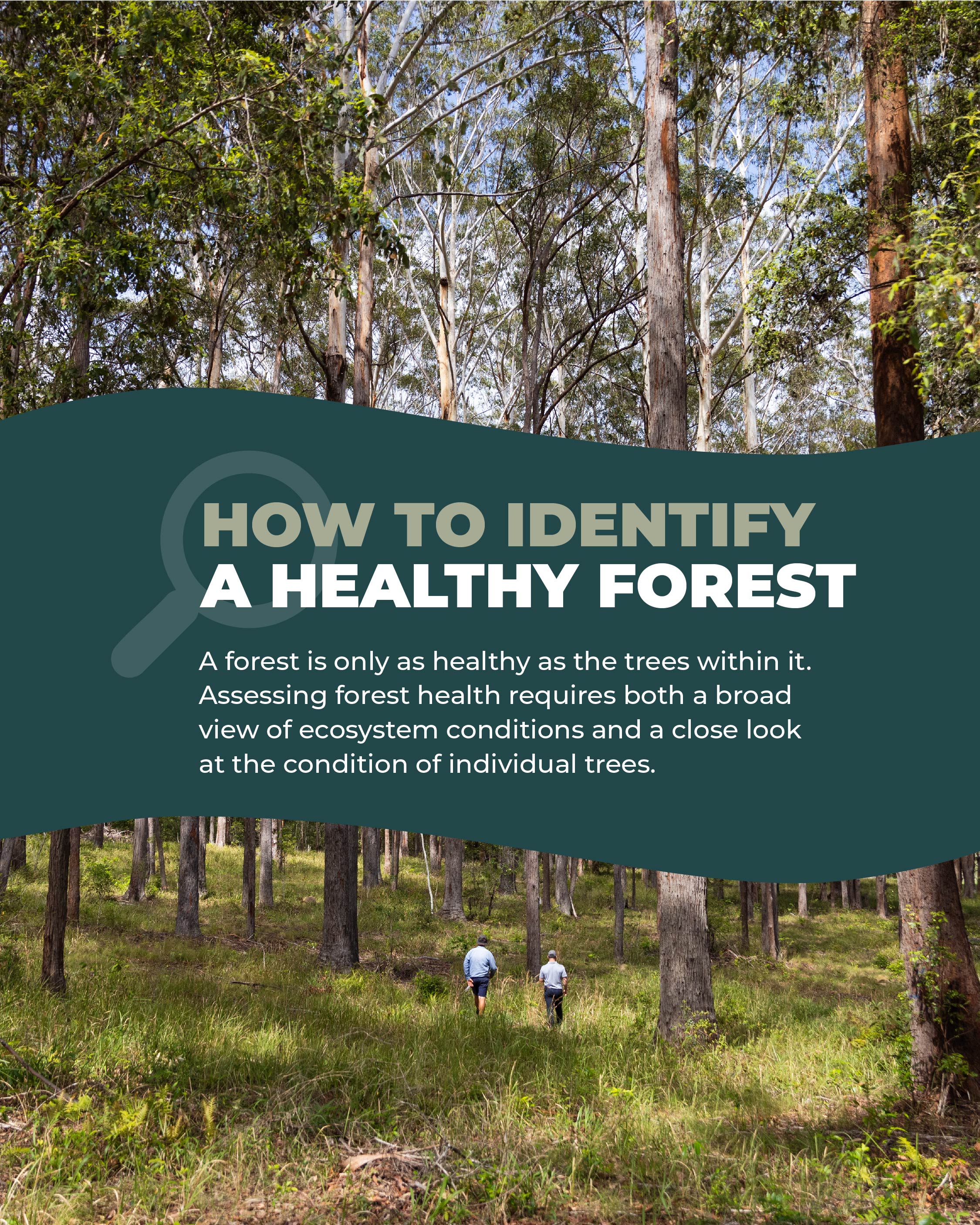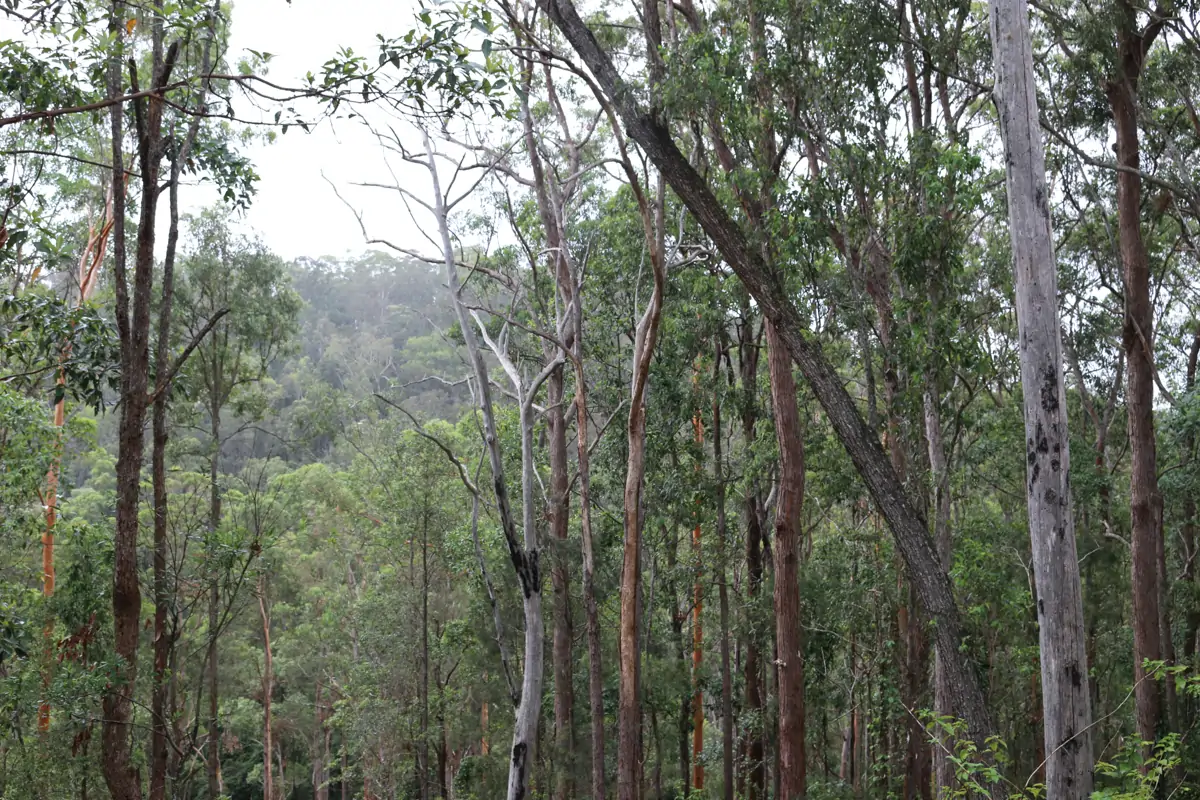In Australia, we know too well that our landscapes swing between flood and drought. Forests feel these changes deeply, too much water and roots suffocate; too little and the trees weaken, becoming more vulnerable to fire and disease.
The NSW Private Native Forestry (PNF) Code of Practice gives landholders a practical framework to manage their forests sustainably, ensuring timber harvesting supports the broader landscape. One of the most important elements of this code is how it helps balance trees and water.
Well-managed forests act like natural water regulators. Healthy forests play a vital role in the water cycle. They absorb rainfall, filter it through root systems, and release it gradually into the soil.
- During heavy rain, forest soils absorb and slow the flow of water, reducing flooding downstream.
- During dry spells, shaded understories and deep roots hold onto moisture, keeping creeks flowing longer.
When forests are cleared too aggressively or the ground is compacted by machinery, this water balance breaks. That’s when we see erosion, silted rivers, and loss of habitat.
Flood vs. Drought: What the Code Tells Us
The PNF Code sets clear rules for managing forests under different conditions, because both extremes, flood and drought, threaten forest health in different ways.
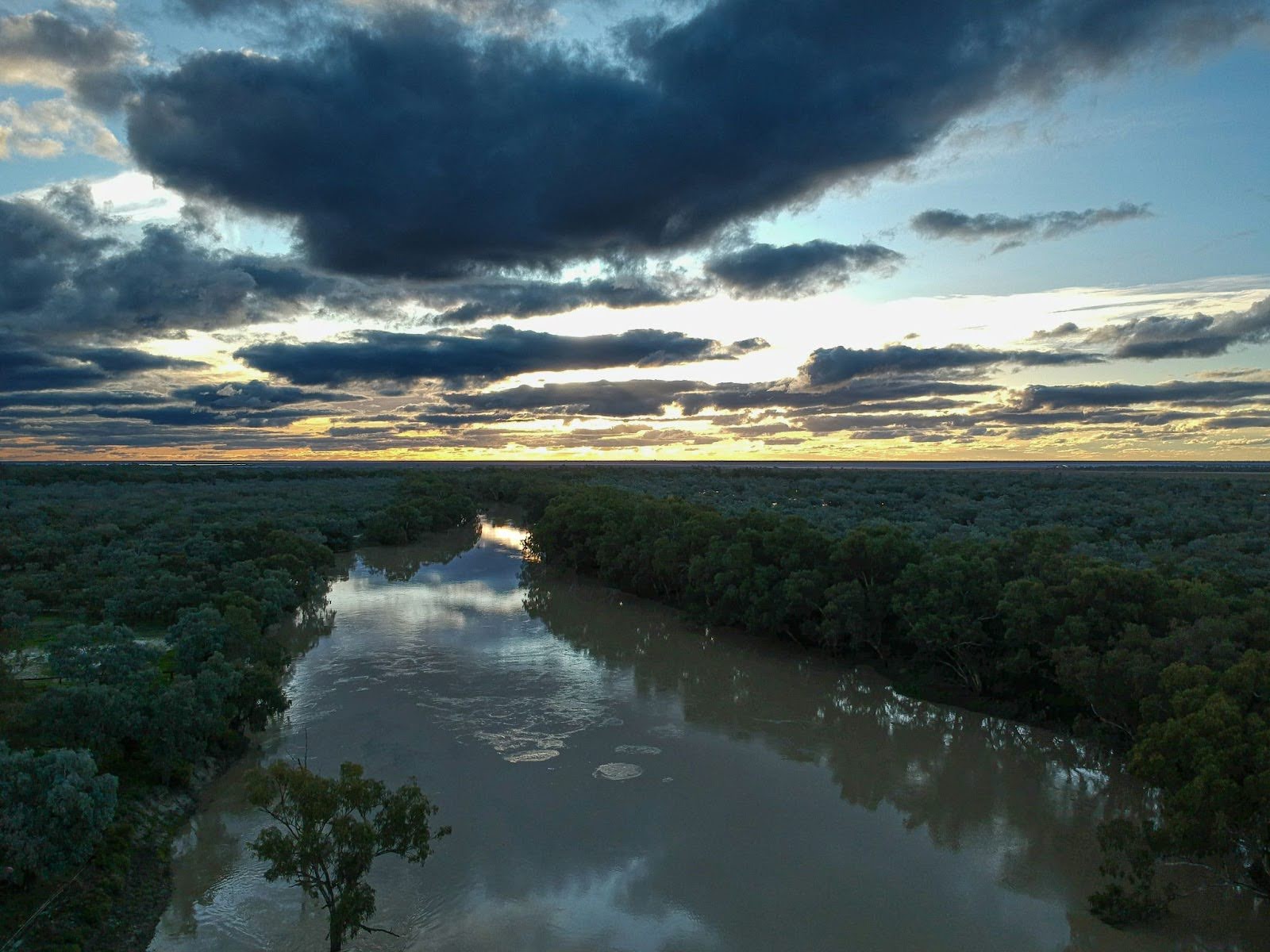
When There Is Too Much Water
Too much water means a risk of flooding, which strips soil, drowns seedlings and weakens root systems. The PNF Code requires 10 to 30m buffer zones along waterways, ensuring vegetation near creeks and rivers is kept to prevent erosion. It also places limits on heavy machinery use in wet conditions to prevent soil compaction, which in turn creates more surface water runoff and accelerates soil erosion. It also recommends retention of ground cover, which acts like a sponge, with leaf litter and understory plants soaking up water. The PNF Code mandates a minimum 70% groundcover is retained post-harvest. Simply put, the PNF code of practice ensures healthy soil is protected and retained.
When There Is Not Enough Water
Too little water, can create drought, stressing trees and increasing fire risk. Forests that are very dry, become highly flammable as vegetation loses moisture and becomes brittle, with more dead leaf litter creating fuel for wildfire. Lower humidity and higher temperatures increase the risk of fire ignition and trees themselves are at higher risk of disease in dry, drought conditions.
The Code supports a minimum 30% retention of canopy cover to keep the forest floor shaded, helping to slow moisture loss. It promotes native, drought-tolerant species that have become adapted to Australia’s harsh climates, such as Spotted Gum (Corymbia maculata) and Tallowwood (Eucalyptus microcorys). It also ensures that forests are not over-harvested, ensuring mixed age trees remain to stabilise the micro-climate of the forest. It does this by setting minimum basal area retention levels. Shaded forests with good canopy coverage holds water longer, becoming a safe home for wildlife and enables faster recovery from particularly dry seasons.
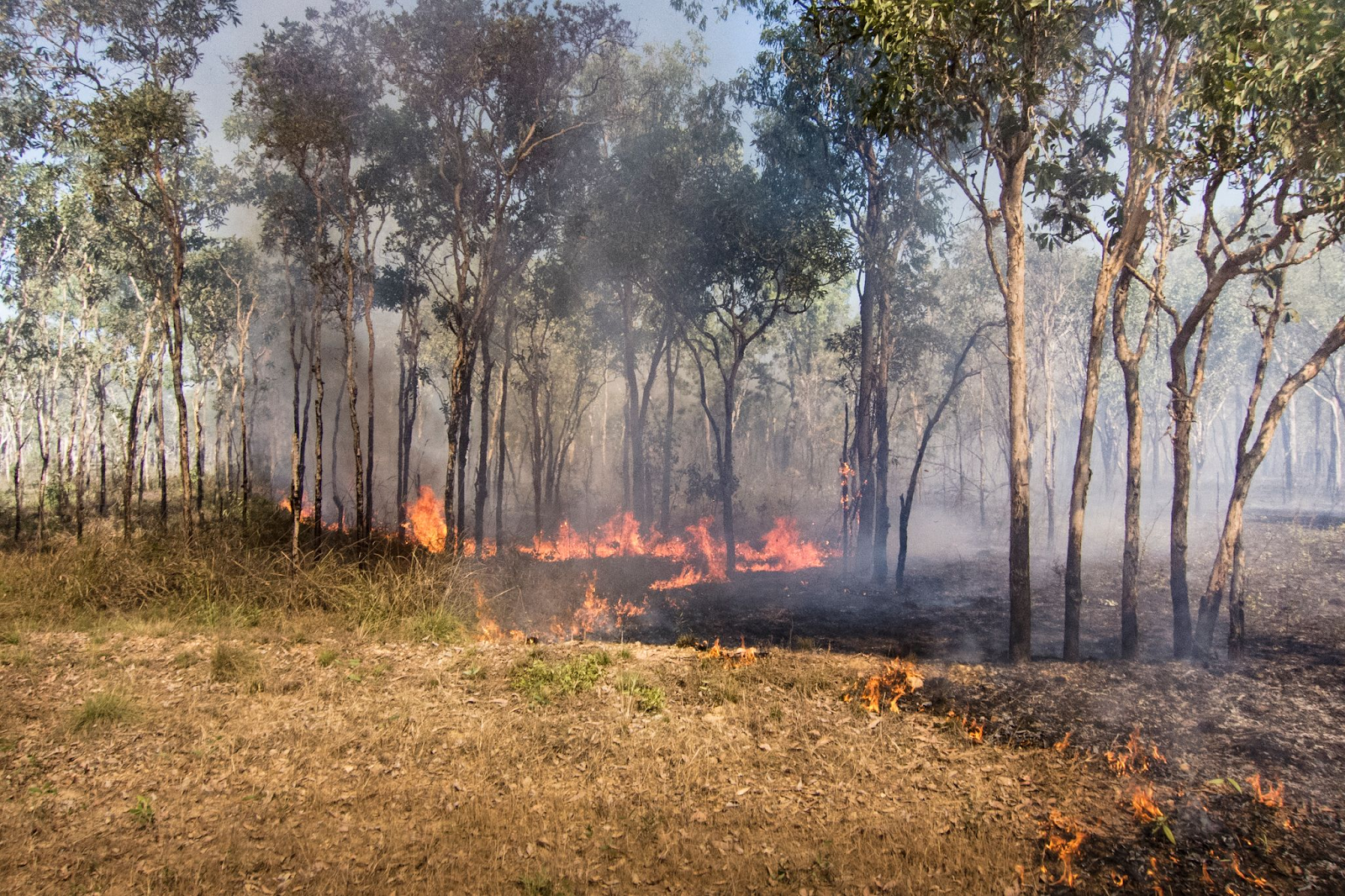
Habitat Trees vs. Timber Trees: Why We Need Both
The PNF Code draws a clear distinction between habitat trees (left standing for wildlife) and timber trees (harvested for wood). Both have a place in a well-managed forest. Habitat trees provide nesting hollows and food for native species, whereas timber trees offer a renewable resource when harvested responsibly.
The Code requires landholders to retain a minimum number of habitat trees per hectare (currently 10), as well as protect old-growth and hollow-bearing trees. These habitat trees help keep the forest ecosystem healthy.
The Benefits of Forest Water Management
The real strength of the PNF Code lies in how it connects trees and water. Every rule about buffer zones, soil stability or selective harvesting ultimately protects the forest’s ability to regulate water. By keeping vegetation near creeks, maintaining canopy cover, and allowing regeneration, managed forests:
- Filter water naturally, before it reaches streams or rivers.
- Prevent flash flooding after heavy rain.
- Hold onto soil moisture through long dry periods.
- Supports biodiversity of flora and fauna, which in turn improves soil nutrients.
In Summary
The NSW Private Native Forestry Code isn’t just a rulebook, it’s a guide to keeping forests alive and profitable in the long term. By balancing habitat and timber, and by managing water wisely, landholders can protect their forests from both floods and droughts.
At Sustainable Forest Management, we work with landowners to harvest high-quality hardwood through sustainable practices ensuring your forest can go on to serve communities for decades to come. From forest planning to selective harvesting, we make sure your land stays productive, your forest regenerates naturally, and valuable habitat is preserved.
Book your FREE forest assessment today – call Siman and the team on 1300 367 378
Download your copy of the Ultimate Private Native Forestry Guide for Landowners
Check out our latest infographic and learn How to Identify a Healthy Forest.
